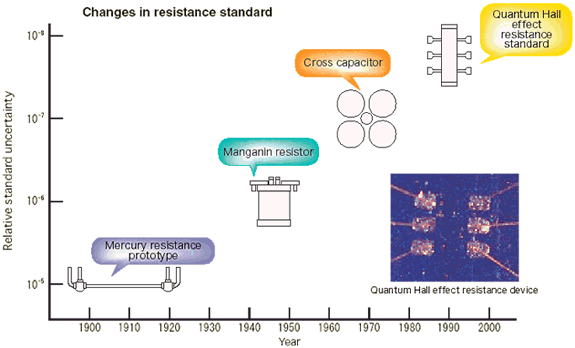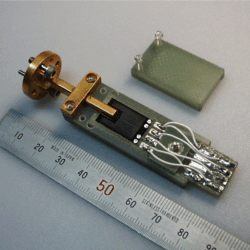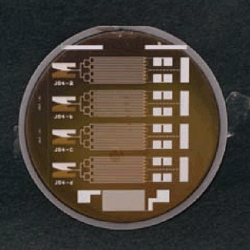Standards for the SI Base Units - Electricity
The Evolution of the Definition of the Electricity
The most fundamental quantities of electricity are current, voltage and resistance, which are interrelated according to Ohm's rule. Two of these are base standards. In 1908, international electric units were established for current (using a silver voltameter) and resistance (using a mercury resistance prototype). In 1948, the electrical standards were voltage (using Weston cells) and resistance (using Manganin resistors); in the 1970s they were voltage (using Weston cells) and resistance (cross capacitor), and since 1990 they have been voltage (Josephson effect voltage standard) and resistance (quantum Hall effect resistance standard).

International Comparison of Voltage
Since 1991, the International Bureau of Weights and Measures, together with major national metrology institutes, including NMIJ, has been conducting international comparisons of Josephson effect voltage standards. International consistency of voltage standards based on the Josephson constant is thus confirmed to an accuracy of better than a part in ten million.


